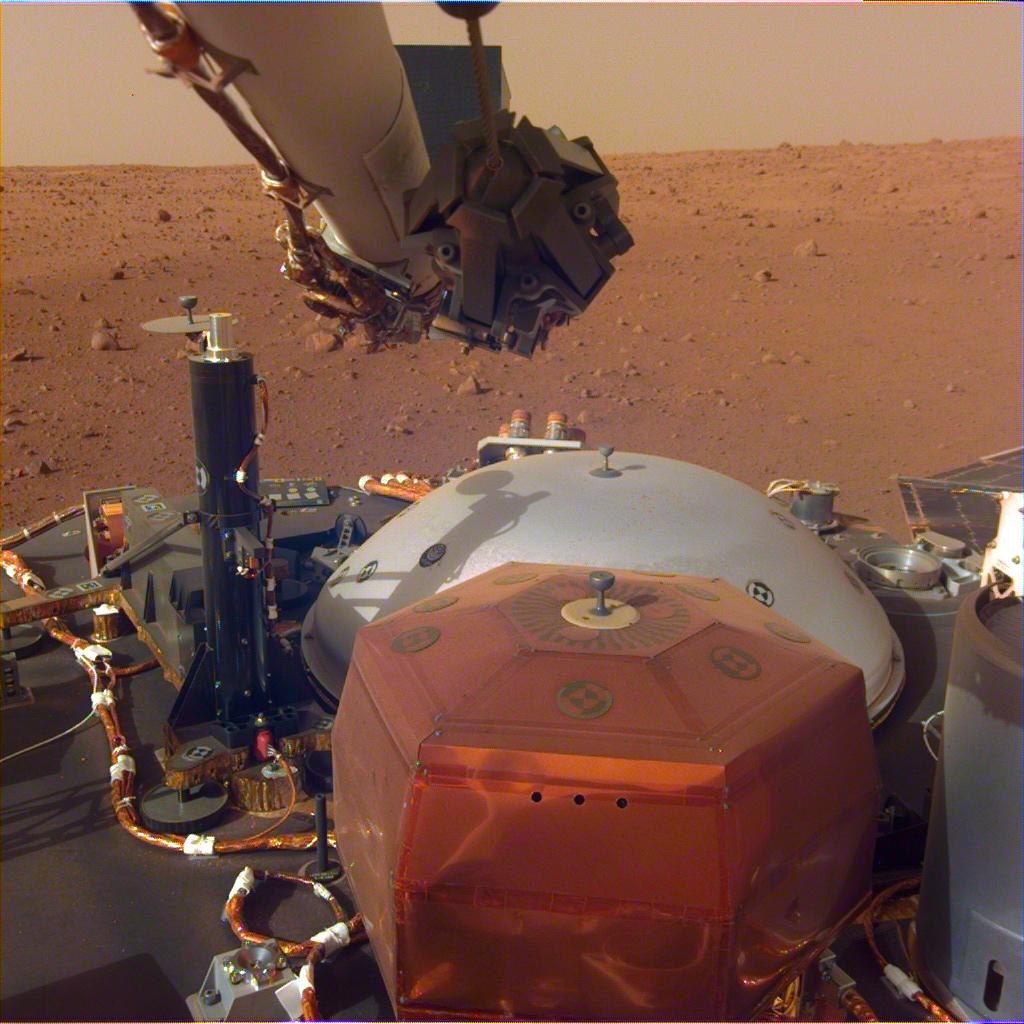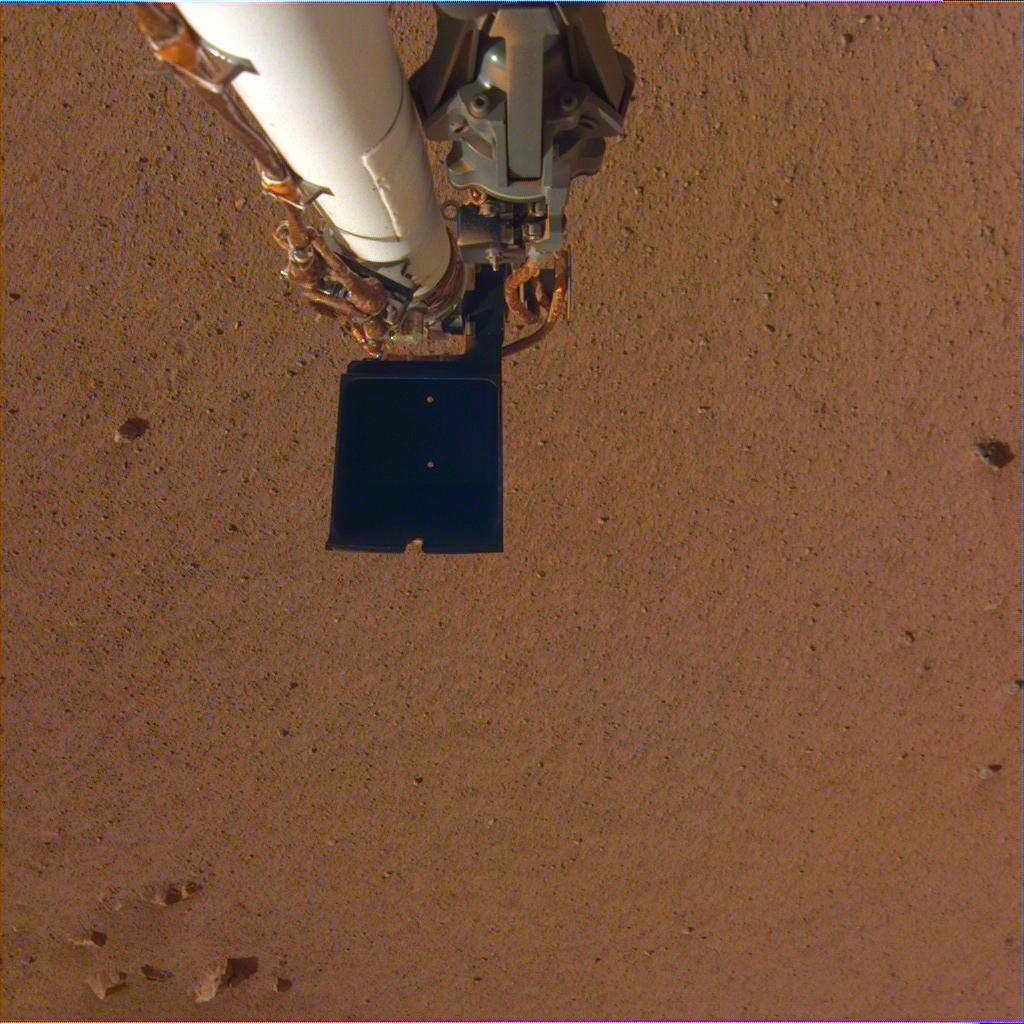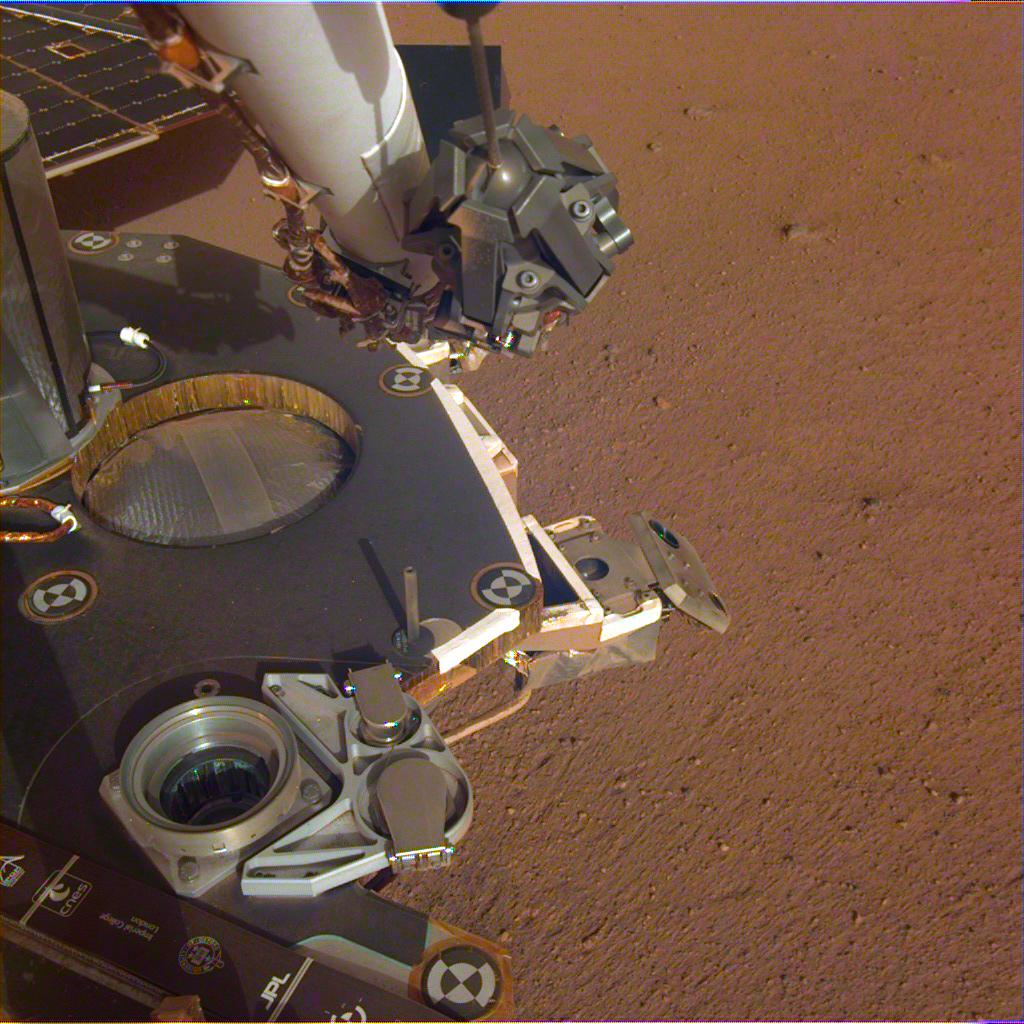Some new images sent home by the InSight Lander show the robotic arm and the craft’s instruments waiting on deck, on the surface of Mars. The lander is still having its systems tested, and isn’t quite ready to get to work. It’ll use its arm to deploy its science instruments, including a drill that will penetrate up to 5 meters (16 ft.) deep into the Martian surface.
Job one for InSight is to take a look at its immediate surroundings. The Instrument Deployment Camera on the robotic arm will take care of that. Crew here on Earth will study the photos and choose exact sites for the lander’s Seismic Experiment for Interior Structure (SEIS) instrument, and its Heat Flow and Physical Properties Probe, (HP3). Another camera, called the Instrument Context Camera (ICC), will also provide views of the area, from its location under the the lander’s deck.
“Today we can see the first glimpses of our workspace,” – Bruce Banerdt, InSight Lander’s Principal Investigator.
“Today we can see the first glimpses of our workspace,” said Bruce Banerdt, the mission’s principal investigator at NASA’s Jet Propulsion Laboratory in Pasadena, California. “By early next week, we’ll be imaging it in finer detail and creating a full mosaic.”

The lander’s secondary camera, the ICC, has some dust on its lens, even though a lens cover was in place. InSight’s Project Manager at JPL, Tom Hoffman, describes the dust as “unfortunate”, but says it won’t affect the mission. “We had a protective cover on the Instrument Context Camera, but somehow dust still managed to get onto the lens,” said Hoffman. “While this is unfortunate, it will not affect the role of the camera, which is to take images of the area in front of the lander where our instruments will eventually be placed.”
InSight will examine its landing area closely before it makes any commitments, and that could take a while. Instrument placement is absolutely critical to the mission, and it could take two or even three months before any decisions are made. In the meantime, there’s been lots of testing.

In the time since InSight nailed its landing, mission engineers have been testing its instruments and systems, ensuring they’re in working order. Though the main instruments won’t be in position to do any work for a while yet, an instrument in the Auxiliary Payload Sensor Systems (APSS) is already collecting meteorological data. A pressure sensor detected a drop in air pressure, possibly caused by a passing dust devil. The APSS also includes a magnetometer and a set of wind and temperature sensors.
“We did extensive testing on Earth. But we know that everything is a little different for the lander on Mars…” – Tom Hoffman, InSight Project Manager at JPL.
The caution around instrument placement extends to the overall mission. During the first few weeks, anything unusual or unexpected will put the lander into fault mode, and it will stop what it’s doing and ask for more instructions from home.
“We did extensive testing on Earth. But we know that everything is a little different for the lander on Mars, so faults are not unusual,” Hoffman said. “They can delay operations, but we’re not in a rush. We want to be sure that each operation that we perform on Mars is safe, so we set our safety monitors to be fairly sensitive initially.”

Mission planners have already accounted for these types of delays. Nobody is in any hurry to rush the instrument placement. Next to the descent and safe landing of InSight, the instrument placement is the next critical step.
Other NASA missions have faced perilous descents and landings, just like InSight has. InSight’s landing procedure was based on the successful landing of NASA’s MSL Curiosity. But InSight is different from every other lander. It’s the only one to have deployable instruments that will be place on the surface. And since InSight can’t move around on the surface, the abundant caution being used in the beginning of the mission is warranted.
InSight has a planned primary mission length of two Earth years, or one Mars year. InSight’s mission is to explore the interior of Mars—the crust, mantle, and core—and find clues to the early formation of rocky planets in our inner Solar System. From that, scientists will gain insight into rocky exoplanets that we discover. InSight will also monitor Mars’ seismic activity and any meteor impacts.
Sources:
- NASA Press Release: NASA’s Mars InSight Flexes Its Arm
- NASA: InSight Mission Instruments
- NASA: InSight Mission Overview
